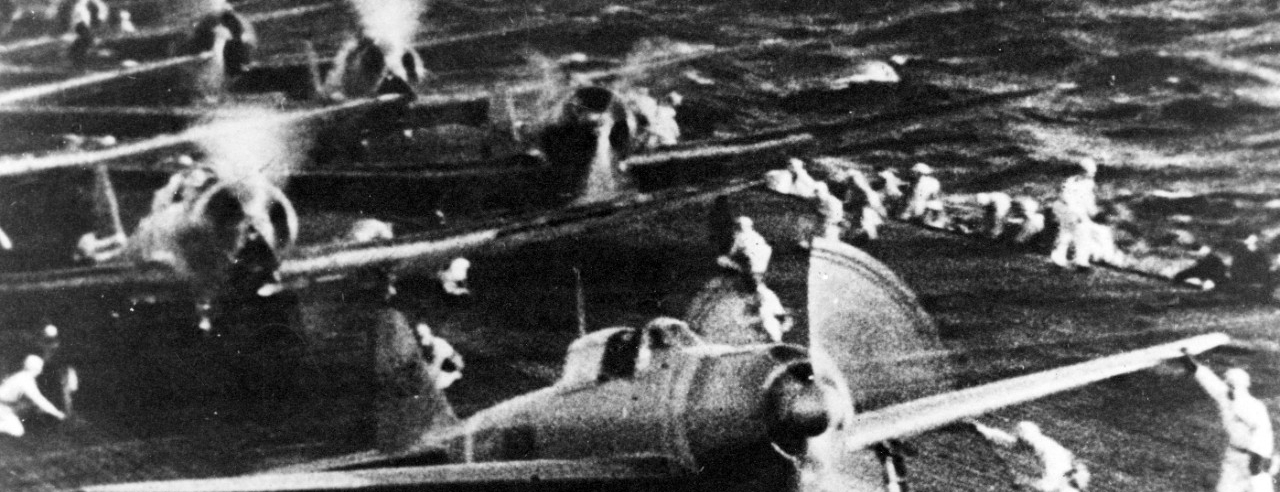
Japanese Forces at Pearl Harbor
The Pearl Harbor naval base was recognized by both the Japanese and the United States Navies as a potential target for hostile carrier air power. The U.S. Navy had even explored the issue during some of its interwar "Fleet Problems". However, its distance from Japan and shallow harbor, the certainty that Japan's navy would have many other pressing needs for its aircraft carriers in the event of war, and a belief that intelligence would provide warning persuaded senior U.S. officers that the prospect of an attack on Pearl Harbor could be safely discounted.
During the interwar period, the Japanese had reached similar conclusions. However, their pressing need for secure flanks during the planned offensive into Southeast Asia and the East Indies spurred the dynamic commander of the Japanese Combined Fleet, Admiral Isoroku Yamamoto to revisit the issue. His staff found that the assault was feasible, given the greater capabilities of newer aircraft types, modifications to aerial torpedoes, a high level of communications security and a reasonable level of good luck. Japan's feelings of desperation helped Yamamoto persuade the Naval high command and Government to undertake the venture should war become inevitable, as appeared increasingly likely during October and November 1941.
All six of Japan's first-line aircraft carriers, Akagi, Kaga, Soryu, Hiryu, Shokaku and Zuikaku, were assigned to the mission. With over 420 embarked planes, these ships constituted by far the most powerful carrier task force ever assembled. Vice Admiral Chuichi Nagumo, an experienced, cautious officer, would command the operation. His Pearl Harbor Striking Force also included fast battleships, cruisers and destroyers, with tankers to fuel the ships during their passage across the Pacific. An Advance Expeditionary Force of large submarines, five of them carrying midget submarines, was sent to scout around Hawaii, dispatch the midgets into Pearl Harbor to attack ships there, and torpedo American warships that might escape to sea.
Under the greatest secrecy, Nagumo took his ships to sea on 26 November 1941, with orders to abort the mission if he was discovered, or should diplomacy work an unanticipated miracle. Before dawn on the 7th of December, undiscovered and with diplomatic prospects firmly at an end, the Pearl Harbor Striking Force was less than three-hundred miles north of Pearl Harbor. A first attack wave of over 180 aircraft, including torpedo planes, high-level bombers, dive bombers and fighters, was launched in the darkness and flew off to the south. When first group had taken off, a second attack wave of similar size, but with more dive bombers and no torpedo planes, was brought up from the carriers' hangar decks and sent off into the emerging morning light. Near Oahu's southern shore, the five midget submarines had already cast loose from their "mother" subs and were trying to make their way into Pearl Harbor's narrow entrance channel.


